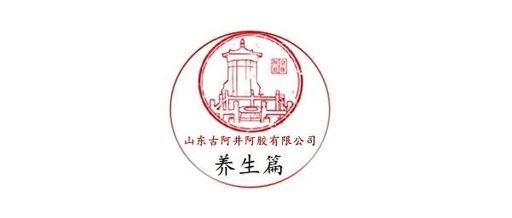
Click the “blue word” above to follow us
Traditional Chinese Medicine (TCM) health preservation has been a health topic of concern for the Chinese people since ancient times, and it is currently the most suitable health system for the Chinese. China’s unique and mature health preservation culture is gradually entering the homes of ordinary people. The “Classification and Judgment Criteria of TCM Constitution” was published by the Chinese Association of Traditional Chinese Medicine in 2009, dividing the constitution of the Chinese people into 9 types, which is of great significance for guiding sub-healthy populations in health preservation. Let’s learn together!
9 Types of Constitution [No specific ranking]
(1) Qi Deficiency Constitution – Fatigue
(2) Yang Deficiency Constitution – Cold Intolerance
(3) Yin Deficiency Constitution – Dehydration
(4) Phlegm-Damp Constitution – Obesity
(5) Damp-Heat Constitution – Acne
(6) Blood Stasis Constitution – Pigmentation
(7) Qi Stagnation Constitution – Depression
(8) Special Constitution – Allergies
(9) Harmonious Constitution – Health
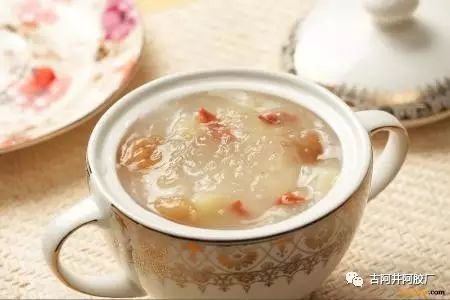
Damp-Heat Constitution
What is “Damp-Heat”? Damp refers to the moisture commonly referred to as water dampness, which can be classified into external dampness and internal dampness. External dampness is caused by humid weather, exposure to rain, or living in damp environments, leading to the invasion of external moisture into the body; internal dampness is a pathological product often related to digestive function. TCM believes that the spleen has the function of “transporting and transforming water and dampness”. If the body is weak, digestion is poor, or there is overeating of greasy and sweet foods, the spleen cannot normally transport and transform, leading to “internal retention of water and dampness”; those with spleen deficiency are also prone to external dampness invasion, and external dampness often obstructs the spleen and stomach, causing dampness to arise from within, thus both are independent yet interconnected.
Heat, in this context, refers to a heat phenomenon. In damp-heat, heat exists simultaneously with dampness, either due to hot and humid weather in summer and autumn, where dampness and heat invade the body, or due to prolonged retention of dampness leading to heat transformation, or due to “Yang-Heat Constitution” causing dampness to “transform into heat from Yang”. Therefore, the coexistence of dampness and heat is quite common.
(1) Characteristics of Damp-Heat Constitution
(1) General Characteristics: Internal damp-heat, characterized by oily facial skin, bitter mouth, and yellow greasy tongue coating.
(2) Physical Characteristics: Medium or slightly thin body type.
(3) Common Manifestations: Oily facial skin, prone to acne, bitter and dry mouth, heavy body feeling, sticky or constipated stools, short yellow urine, men prone to scrotal dampness, women prone to increased vaginal discharge, red tongue, yellow greasy coating, slippery and rapid pulse.
(4) Psychological Characteristics: Prone to irritability and restlessness.
(5) Disease Tendencies: Prone to sores, jaundice, and heat dysuria.
(6) Adaptability to External Environment: Difficult to adapt to humid and hot climates in late summer and early autumn.
(2) Causes of Damp-Heat Constitution:
Many factors can lead to a damp-heat constitution, including excessive consumption of rich and fatty foods, preference for smoking and drinking, overeating of cold foods, lack of exercise, emotional depression, long-term residence in damp environments, and exposure to rain.
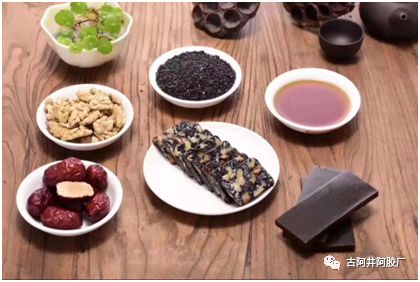
(3) Care and Nurturing
Individuals with a damp-heat constitution should follow a principle of light diet, suitable for consuming foods with sweet-cold and bitter-cold properties; avoid spicy and warming foods, and abstain from smoking and drinking. Avoid living in low-lying damp areas, maintain sufficient and regular sleep, and avoid long nights and excessive fatigue. Engage in high-intensity and high-volume exercises, such as middle-distance running, swimming, hiking, various ball games, and martial arts; during summer workouts, avoid hot environments and choose early morning or evening. Maintain an optimistic mindset and control excessive emotions.
[Recommended Nurturing, for reference only]
250g of Ejiao (Donkey-hide Gelatin) + 100g of Cang Zhu (Atractylodes) + 100g of Yi Yi Ren (Job’s Tears)
Dosage for 45 days, once daily
Three months for one treatment course
Accompanied by tea: Chrysanthemum and Codonopsis Tea [1:1 ratio]
Phlegm-Damp Constitution
The phlegm-damp constitution is the largest breeding ground and soil for various lifestyle diseases. In the Ming Dynasty, Zhang Sanxi recorded in “Medical Principles” that “Phlegm and fluid can lead to various symptoms, resembling various miscellaneous diseases, and should not be misnamed as miscellaneous diseases; treatment of phlegm should be prioritized, as phlegm elimination leads to symptom resolution.” This indicates that phlegm symptoms are complex and can occur in various clinical departments.
Phlegm-damp is a disease name, referring to a symptom of a person’s constitution, often caused by improper diet or disease. Here, “phlegm” does not only refer to the general concept of phlegm but refers to the abnormal accumulation of body fluids, which is a pathological product. “Dampness” can be divided into internal and external dampness: external dampness refers to humid air and environments, where external dampness can invade the body and cause disease; internal dampness refers to poor digestive function, where water flow in the body is uncontrolled, leading to fluid accumulation, or due to alcohol consumption and cold beverages, causing internal fluid retention and forming internal dampness. Individuals with a phlegm-damp constitution often have spleen and stomach dysfunction and endocrine disorders.
(1) Characteristics of Phlegm-Damp Constitution
(1) General Characteristics: Phlegm-damp accumulation, characterized by obesity, fullness in the abdomen, and sticky tongue coating.
(2) Physical Characteristics: Obese body shape, soft fullness in the abdomen.
(3) Common Manifestations: Oily facial skin, excessive sweating, chest tightness, excessive phlegm, sticky or sweet mouth, preference for fatty and sweet foods, greasy tongue coating, slippery pulse.
(4) Psychological Characteristics: Generally mild and steady personality, often patient.
(5) Disease Tendencies: Prone to diabetes, stroke, and chest obstruction.
(6) Adaptability to External Environment: Poor adaptability to the rainy season and humid environments.
(2) Causes of Formation
The causes of phlegm-damp constitution are related to congenital inheritance or excessive consumption of rich and fatty foods. It is often seen in those who prefer sweet and meaty foods, dislike exercise, and lead a comfortable lifestyle.
(3) Care and Nurturing
Individuals with a phlegm-damp constitution should follow a principle of light diet, suitable for consuming foods that strengthen the spleen, resolve phlegm, and eliminate dampness, and avoid rich and fatty foods. Maintain regular daily routines, enjoy sunlight or sunbathing, keep living environments dry, avoid living in cold and damp environments, and avoid exposure to rain and cold. Engage in outdoor activities, maintain physical exercise, and avoid excessive comfort and laziness; moderate emotional fluctuations, cultivate hobbies, and divert attention. Consume foods that help eliminate dampness, such as Huai Shan (Chinese Yam), Bai Bian Dou (White Hyacinth Bean), Yi Yi Ren (Job’s Tears), Chi Xiao Dou (Adzuki Bean), crucian carp, and ginger, which are all excellent daily foods for dampness elimination.
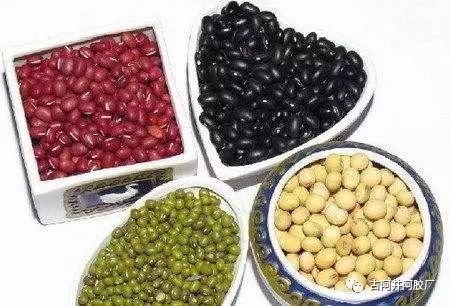
[Nurturing Recommendations, for reference only] (Tendency towards three highs)
250g of Ejiao (Donkey-hide Gelatin) + 100g of Jie Geng (Platycodon) / 50g of Zhi Ke (Bitter Orange) + 100g of Fu Ling (Poria) + 30g of Chen Pi (Dried Tangerine Peel)
Dosage for 45 days, once daily, three months for one treatment course
Accompanied by tea: Codonopsis and Lotus Leaf Tea [1:1 ratio]
Blood Stasis Constitution
The main symptom of blood stasis constitution is slow and obstructed blood circulation, often due to long-term emotional depression, living in cold regions, or dysfunction of internal organs, primarily seen in individuals who are relatively thin.
(1) Characteristics of Blood Stasis Constitution
(1) General Characteristics: Poor blood circulation, characterized by dull skin color and purple-dark tongue.
(2) Physical Characteristics: Both thin and overweight individuals can be seen.
(3) Common Manifestations: Dull skin color, pigmentation, easy bruising, pale lips, dark tongue or with purple spots, purple or thickened sublingual veins, and choppy pulse.
(4) Psychological Characteristics: Prone to irritability and forgetfulness.
(5) Disease Tendencies: Prone to lumps and pain syndromes, blood disorders, etc.
(6) Adaptability to External Environment: Poor tolerance to cold pathogens.
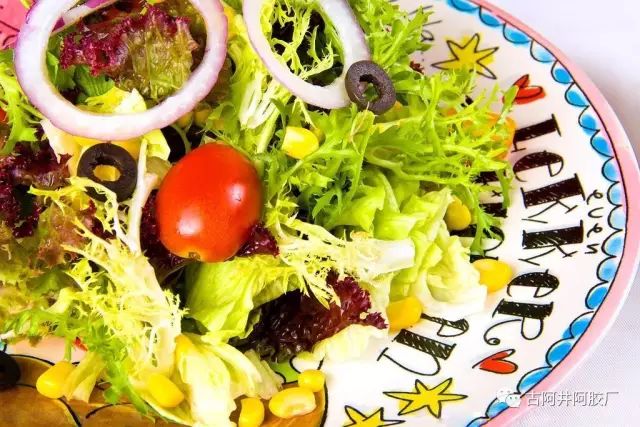
(2) Causes of Formation
Insufficient congenital endowment, or damage from later life, or emotional stagnation, or prolonged illness.
(3) Care and Nurturing
Individuals with blood stasis constitution should consume foods that invigorate blood circulation, disperse masses, and soothe the liver to relieve depression, such as Hawthorn, Kumquat, Black Soybean, Taro, Radish, Carrot, Peach, Vinegar, and Rose, while avoiding fatty and oily foods. Balance activity and rest, avoid overwork and excessive idleness, maintain sufficient sleep, and avoid staying up late. Engage in exercises that promote blood circulation, such as Tai Chi and dance. Cultivate an optimistic and cheerful personality, and listen to soft and lyrical music to regulate emotions.
[Nurturing Recommendations, for reference only] (For pigmentation)
250g of Ejiao (Donkey-hide Gelatin) + 120g of Huang Qi (Astragalus) + 30g of Zang Hong Hua (Safflower) + 60g of San Qi (Notoginseng) / Dan Shen (Salvia) [Choose San Qi for cold constitution, Dan Shen for hot constitution]
Dosage for 45 days, once daily, three months for one treatment course
Accompanied by tea: Honey Rose Tea [1:1 ratio]


